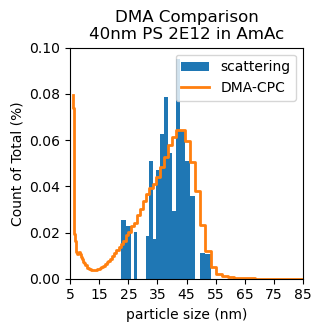Rayleigh-Based Particle Tracking and Sizing

A biophysics experiment focused on tracking and sizing aerosolized macromolecules for single-particle imaging (SPI) using Rayleigh scattering. Conducted at Uppsala University and TU Vienna, the project implemented a light scattering-based diagnostic system using an electrospray and aerodynamic lens setup. The results validated particle size distributions against DMA measurements and supported SPI optimization workflows.
Experimental Setup
Using the Uppsala Injector with electrospray and aerodynamic lensing, the system introduced aerosolized particles into a low-pressure chamber for laser illumination. A double-pulse laser system enabled velocity and size analysis from captured diffraction images.
Scientific Relevance
This approach is critical for improving hit rates and beam quality in single-particle imaging using XFELs. The Rayleigh scattering method offers a cost-effective path to evaluate and improve sample injection before expensive XFEL time is used.
- 1Calibration and sizing of nanoparticles via Rayleigh scattering
- 2Validation with Differential Mobility Analyzer (DMA)
- 3Custom software pipeline for tracking and filtering hits
- 4Optimized particle beam alignment and focusing
- •Achieving particle focusing in electrospray injectors
- •Correcting for laser intensity variations across ROI
- •Distinguishing valid particle hits from noise and reflections
- •Refining calibration curves with minimal physical artifacts
- •Practical understanding of Rayleigh scattering theory
- •Particle tracking and sizing in aerosol physics
- •Experimental lab work with precision instrumentation
- •Comparison between theory, simulation, and real-world data